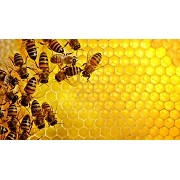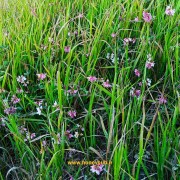An epic narrative of the ancient history and civilization of Persia (Iran); a story of a nation that, like the...
Important Diseases of Honey Bees and Their Treatment
Introduction
Honey bees are vital pollinators and play an important role in agriculture and ecosystems. However, they are susceptible to various diseases that can have a significant impact on their health and survival. In this article, we will review some important bee diseases, their causes, symptoms and treatment options. If you want to check the important honey bee pests and ways to prevent them, click here.
Important honey bee diseases
When the disease comes in the apiary, the alarm should sound. Due to the high population inside each hive, in case of delay, the damage will be irreparable. In this section, we will present the symptoms, treatment and control of the most important bee diseases in Iran. We hope that by observing the important points that we have written in headlines, you will get your answer faster and have a healthy and cheerful apiary.
Nosema disease (Nosema apis)
Nosema disease is a parasitic disease caused by the protozoan parasite Nosema apis. This parasite lives in the intestines of worker bees and queen bees and causes the bees to be unable to digest food effectively.
Symptoms of nosema disease
- Weight loss
- weakness
- Death of worker bees
- Decreasing honey production
Nozma disease transmission ways
- Infected bees
- Infested hives
- contaminated pollen
Methods to prevent nosema disease
- Using healthy and clean hives
- Using healthy and disease-resistant bees
- Control of Varroa destructor mite population
- Using antiparasitic drugs to treat the disease
Methods for treating nosema disease
To treat nosema disease, you can use antiparasitic drugs such as fumagillin. These drugs should be used according to the veterinarian's instructions to prevent resistance in the parasite.
Here is a picture of Nosema apis parasite:
 This disease is caused by the protozoan parasite Nosema apis. Symptoms of the disease include weight loss, weakness and death of worker bees.
This disease is caused by the protozoan parasite Nosema apis. Symptoms of the disease include weight loss, weakness and death of worker bees.American leek disease (black leek):
This disease is caused by the bacteria Paenibacillus larvae. Symptoms of the disease include the death of young bees, the presence of dead and black larvae in the hive, and an unpleasant smell.Symptoms of American Luke disease
- Death of young bees
- The presence of dead and black larvae in the hive
- Unpleasant smell
Ways of transmission of American Luke disease
- Infected bees
- Infested hives
- contaminated pollen
Methods to prevent American Luke disease
- Using healthy and clean hives
- Using healthy and disease-resistant bees
- Control of Varroa destructor mite population
Treatment methods of American Luke's disease
There is no cure for American Luke's disease. To prevent the spread of the disease, beekeepers must destroy infected hives.
European leek disease (white leek):
European leukosis is a bacterial disease caused by the bacterium Melisococcus plutonium. This disease mainly affects bee larvae and leads to their death.
Symptoms of European leukaemia
- Dead and white larvae at the bottom of the hive
- Unpleasant smell from the hive
- Decreasing honey production
The ways of transmission of European tuberculosis
- Transfer of infected bees
- Transfer of infected hives
- contaminated pollen transfer
Methods to prevent European leukaemia
- Using healthy and clean hives
- Using healthy and disease-resistant bees
- Control of Varva mite population
Methods of treatment of European leukodisease
There is currently no cure for European leukemia. You can prevent the spread of the disease by removing dead and white larvae and feeding healthy bees properly.
Varvasis disease or yellow lok (varva mite disease):
Yellow eye disease is a parasitic disease caused by the varroa mite. Varroa mite is a parasite that feeds on bee hemolymph. These mites can reduce honey production, colony losses and even colony death. In some areas, it is also called the destructive tick.
Symptoms of Varois disease
- Decreasing honey production
- Colony shrinking
- Death of worker bees
- The presence of dead and white larvae in the hive
- Infected bees
- Infested hives
- contaminated pollen
Methods to prevent Yellow Luke disease
- Using healthy and clean hives
- Use of healthy bees Om to Varva
- 's tick
- Using anti-mite drugs to treat the disease
Methods of treatment of Yellow Luke disease
To treat Yellow Luke disease, you can use anti-mite drugs. These drugs should be used according to the doctor's instructions to prevent the development of resistance in the varva mite.
This disease is caused by Varroa destructor mite. The Varroa destructor mite feeds on the blood of worker bees and can cause a decrease in honey production, colony losses and even the destruction of the colony.
Canker disease (pollen canker):
Canker disease is a fungal disease caused by the fungus Ascosphaera apis. This disease mainly affects bee pollen and makes the pollen unusable.Symptoms of chancre disease
- Black and rotten pollen
- Presence of small holes in the pollen
- Unpleasant smell
Ways of transmission of chancre disease
- Infected bees
- Infested hives
- contaminated pollen
How to prevent chancre disease
- Using healthy and clean hives
- Using healthy and disease-resistant bees
- Control of Varroa destructor mite population
- Using antifungal drugs to treat the disease
Methods for treating chancre disease
To treat canker sores, you can use antifungal drugs. These drugs should be used according to the doctor's instructions to prevent the development of resistance in the fungus.
Is canker disease a bee disease?
Yes, canker disease is a bee disease. This disease is caused by the fungus Ascosphaera apis, which affects bee pollen. Pollen infected with canker disease is unusable and can cause a decrease in honey production and the death of the colony.
Abdominal edema disease
Abdominal edema is a non-infectious disease caused by various factors such as lack of food, unfavorable weather conditions and pollution. This disease causes swelling of the abdomen of worker bees.symptoms of abdominal swelling disease
- Belly swelling of worker bees
- Inability to fly
- Death of worker bees
Ways of transmission of flatulence disease
- transfer of contaminated pollen and nectar
- Transfer of infected bees
Methods to prevent abdominal swelling disease
- Using healthy and clean hives
- proper feeding of bees
- control of weather conditions
- hive disinfection
Methods for treating abdominal swelling disease
There is currently no cure for ascites. You can prevent the spread of disease by removing sick bees and feeding healthy bees properly.
Black spot disease
Black spot disease is a non-infectious disease that is caused by various factors such as lack of food, unfavorable weather conditions and pollution. This disease causes black spots on the skin of worker bees.
Symptoms of black spot disease
- The existence of black spots on the skin of worker bees
- Weight reduction of worker bees
- Death of worker bees
The ways of transmission of black spot disease
- transfer of contaminated pollen and nectar
- Transfer of infected bees
Methods to prevent black spot disease
- Using healthy and clean hives
- proper feeding of bees
- control of weather conditions
- hive disinfection
Methods to treat black spot disease
There is currently no cure for black spot disease. You can prevent the spread of disease by removing sick bees and feeding healthy bees properly.
methods of prevention and treatment of bee diseases
To prevent bee diseases, you should do the following:
- Using healthy and clean hives
- Using healthy and disease-resistant bees
- Control of Varroa destructor mite population
- Using antifungal and antibacterial drugs to treat diseases
- Important honey bee pests
Conclusion
Bee health is important for beekeepers and the environment. Beekeepers must take measures to prevent, treat and control bee diseases and pests.
Leave a comment
Log in to post comments
























Latest comments